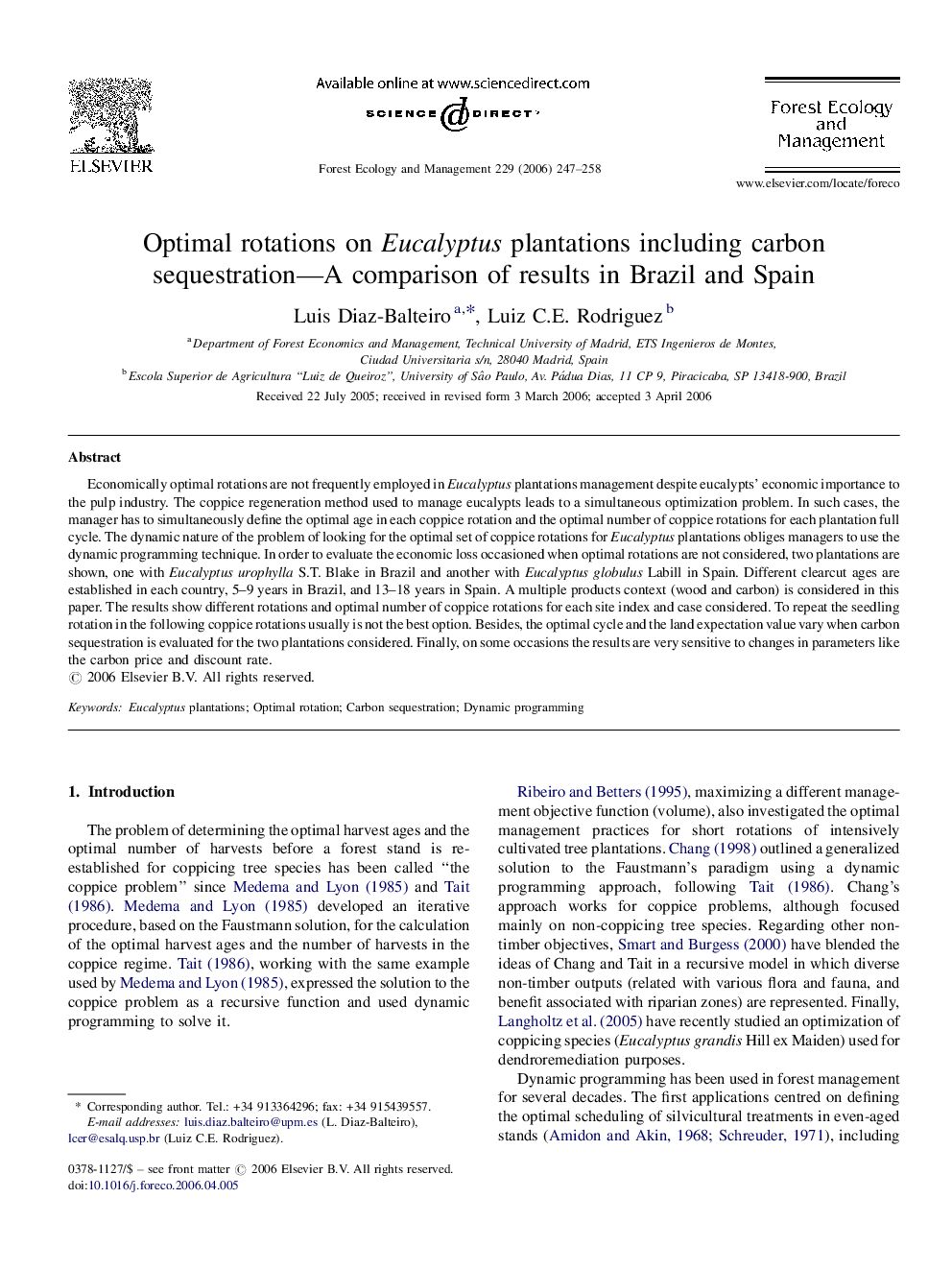| Article ID | Journal | Published Year | Pages | File Type |
|---|---|---|---|---|
| 90843 | Forest Ecology and Management | 2006 | 12 Pages |
Economically optimal rotations are not frequently employed in Eucalyptus plantations management despite eucalypts’ economic importance to the pulp industry. The coppice regeneration method used to manage eucalypts leads to a simultaneous optimization problem. In such cases, the manager has to simultaneously define the optimal age in each coppice rotation and the optimal number of coppice rotations for each plantation full cycle. The dynamic nature of the problem of looking for the optimal set of coppice rotations for Eucalyptus plantations obliges managers to use the dynamic programming technique. In order to evaluate the economic loss occasioned when optimal rotations are not considered, two plantations are shown, one with Eucalyptus urophylla S.T. Blake in Brazil and another with Eucalyptus globulus Labill in Spain. Different clearcut ages are established in each country, 5–9 years in Brazil, and 13–18 years in Spain. A multiple products context (wood and carbon) is considered in this paper. The results show different rotations and optimal number of coppice rotations for each site index and case considered. To repeat the seedling rotation in the following coppice rotations usually is not the best option. Besides, the optimal cycle and the land expectation value vary when carbon sequestration is evaluated for the two plantations considered. Finally, on some occasions the results are very sensitive to changes in parameters like the carbon price and discount rate.
